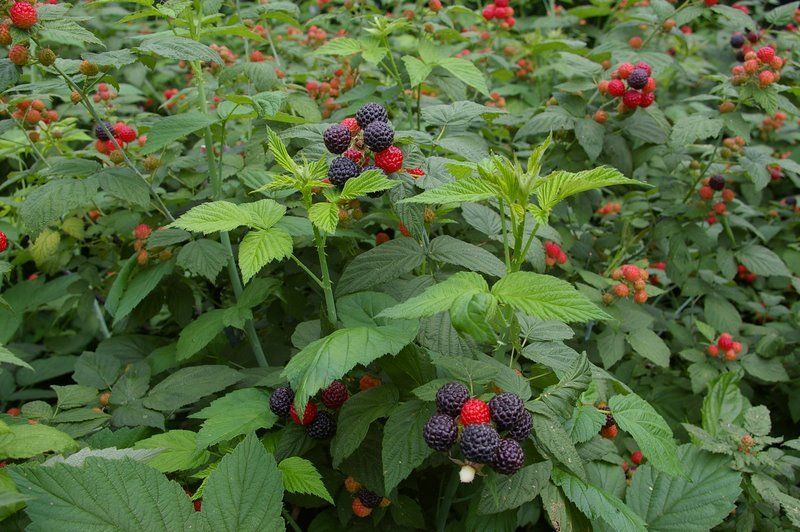Earth Haven Farm grows black and yellow (golden) raspberries. Each year we sell root stock in the spring for farmers and gardeners wishing to start their own berry patch. Every summer we offer fresh picked berries for sale to our customers.
If you are interested in growing your own berries, here are a few facts to consider.
In a small space, raspberries yield a phenomenal quantity of ravishing berries—and they fruit year after year with proper care. Raspberries can be harvested all the way from midsummer through to the first frost. See our tips on how to plant, grow, harvest, and prune raspberries!

WHEN TO PLANT RASPBERRIES
- Start with one-year-old raspberry canes from a reputable nursery. Plant the early spring once the ground thaws out and can be worked. See your local frost dates.
- In mild areas, you could also plant in late autumn to give the plants a head start.
- Plant potted transplants in the spring after threat of frost has passed.
CHOOSING AND PREPARING A PLANTING SITE
- Raspberries grow best in a sunny position but also, unlike many fruits, they will also grow successfully in a partially-shaded spot. The more sun, the more fruit.
- The planting site needs rich and well-drained soil, great air circulation, and shelter from wind. Avoid a wet area, as well as a windy spot, as raspberries do not like to stand in water nor totally dry out.
- Every year, feed your raspberry plants with a couple inches of compost or aged manure; dig in a couple weeks before planting. (A good rate is about 3 ½ cubic feet of compost per 100 square feet.)
- Plant far from wild growing berries; otherwise you risk spreading wild pests and diseases to your cultivated berry plants.
HOW TO PLANT RASPBERRIES
- Before planting, soak the roots for an hour or two.
- Dig a hole that is roomy enough for the roots to spread. If you’re planting multiple bushes, it’s easiest to dig a trench.
- Whether you’re planting bare-root or potted plants, keep the crown of the plant 1 or 2 inches above the ground.
- Canes should be spaced 18 inches apart, with about four feet between rows.
- Fill the soil back in, and tamp it down with your foot.
- Once the canes are planted, cut them down to 9 inches tall to encourage new growth. (Yes, it will look like a broken branch sticking out of the ground!)
- Depending on the variety you plant, you may need to fashion a support to hold up canes. Many grow to head-height.
- A trellis or a fence are good options. If you have a row, drive in two six-foot posts at the end of the row and stretch galvanized wire between the posts. Summer-fruiting raspberries need three horizontal wires and the fall types could do with two wires.
THE IMPORTANCE OF PRUNING
All raspberries will need pruning annually! Raspberries are perennials, however it’s important to realize that their branches (or canes) which bear the fruit live for only two summers. During the first year, the new green cane (primocane) grows vegetatively. The cane develops a brown bark, is dormant in winter, and during the second growing season is called a floricane. The floricane produces fruit in early to mid summer and then dies. New primocanes are produced each year, so fruit production continues year after year. It’s your job to prune out those dead canes each year.
NUTRITIONAL FACTS
Raspberries are a good source of vitamins, minerals, and antioxidants. Raspberries can range in color from the popular red and black varieties to purple, yellow, or golden.
The fiber in raspberries can also help manage or prevent:
- blood pressure.
- cholesterol levels.
- obesity.
- heart disease.
- stroke.
|